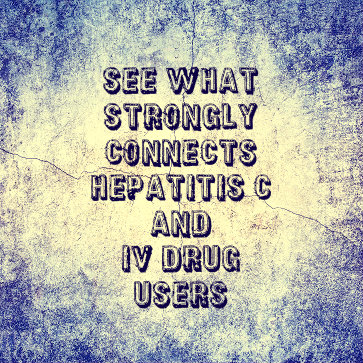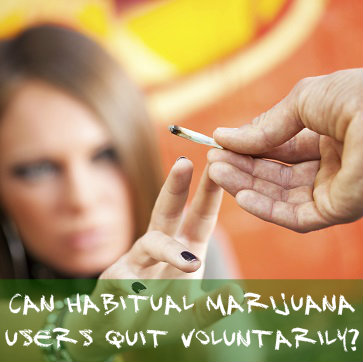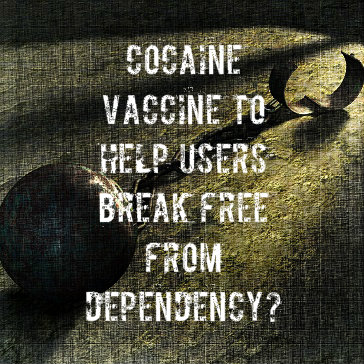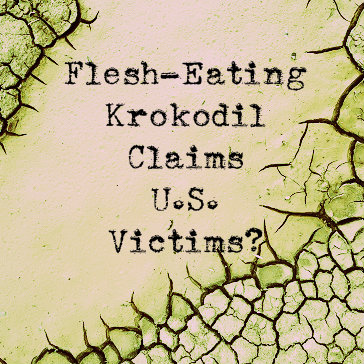29 Nov 2013
Why ADHD And Drug Abuse Commonly Occur Together
According to psychiatric literature, as many as five percent of the American population deals with attention deficit hyperactivity disorder (ADHD), and half of those people may also have a problem with substance abuse. That’s because the two conditions frequently appear together, a relationship referred to as comorbidity. Because both stem from dysfunction in the reward system, it can be hard to untangle and treat the conditions simultaneously.
Connection Factors Between ADHD And Drug Addiction
 Past studies of twins have shown a high comorbidity between ADHD and drug addiction. These studies point to shared genes which make a person more susceptible to both conditions. When a person has a genetic predisposition combined with environmental risk factors, the likelihood of the two conditions arising increases. To compound the problem, other studies reveal that people with ADHD are at greater risk for earlier onset of drug abuse, more serious abuse and a harder time remaining abstinent.
Past studies of twins have shown a high comorbidity between ADHD and drug addiction. These studies point to shared genes which make a person more susceptible to both conditions. When a person has a genetic predisposition combined with environmental risk factors, the likelihood of the two conditions arising increases. To compound the problem, other studies reveal that people with ADHD are at greater risk for earlier onset of drug abuse, more serious abuse and a harder time remaining abstinent.
Diagnosing Adult ADHD
Both ADHD and substance abuse are diagnosed by using established tools which are essentially checklists of symptoms. In order to diagnose ADHD, a person must demonstrate a minimum of six symptoms of either hyperactivity or distractibility, but not necessarily symptoms in both categories. Doctors may be hesitant to diagnose adult ADHD, and even more so when a patient appears to be dealing with substance abuse as well, just because it requires a bit of detective work and a delicate balancing act in terms of treatment.
One way doctors can diagnose adult ADHD is by asking open-ended questions such as, “Why do you suspect that you may have ADHD?” this may result in symptoms being displayed without prodding. If this doesn’t happen right away, doctors can ask clarifying questions such as, “What does your work life look like?” or “Describe several of your closest relationships.” In terms of substance abuse, it is best to be forthright with questions such as, “Do you use any substances? “followed by, “Describe your substance use.”
A long-term picture will be the most accurate, so asking about grade school and high school experiences can be helpful. However, in some cases a parent may have performed the role of compensating presence – monitoring homework, ensuring the student was on time, helping them keep things organized, etc. – so with adult patients asking about college life or work life may actually provide the clearest idea of what symptoms are present. Whenever possible, having the added perspective of another person such as a spouse, parent or sibling is useful.
Symptoms Doctors Will Explore When Diagnosing ADHD
- Trouble focusing on a single task. The person has difficulty reading, leaves tasks unfinished, is not a good listener, engages in a lot of daydreaming and frequently loses things.
- Trouble staying focused. The person finds it hard to plan and organize. Time management is a problem issue. The person has difficult in recognizing potential consequences of actions.
- Trouble with motor control. The person exhibits restless, non-goal oriented movement and they can’t sit still for extended periods of time. It is important to note that the person who doodles and draws or who packs their daily schedule may also be showing signs of difficulty.
- Trouble with self-control. The person is impulsive, talking and acting without thinking. They frequently interrupt others and have little patience.
What These Brain-Function Symptoms Reveal
Each of these symptoms reveals sluggishness within the brain’s mesolimbic dopamine system, or reward pathway. Healthy people feel a certain amount of elation when they embrace another, hear beautiful music or engage in fun physical activity, and the reward circuitry in the brain is pre-set to respond positively to these things. When a person has an ill-functioning reward system, they may engage in riskier behaviors in order to stimulate or activate the reward response.
Treatment For ADHD And Substance Abuse
Drug use exacerbates this problem. Therefore, the best treatment will result from a multi-pronged approach. Persons with comorbid ADHD and substance abuse will probably require individual counseling, support group therapy, carefully monitored medication therapy and specific lifestyle changes.
Read More About Addiction And Mental Disorders
Hepatitis C is a form of serious, liver-damaging illness triggered by infection with a virus commonly known as the hepatitis C virus (HCV). Current evidence indicates that, throughout the U.S. and the rest of the world, the majority of new cases of this illness stem from the unsanitary injection of IV drugs (intravenous drugs). In a study published in June 2013 in the Harm Reduction Journal, a multi-institution research team reviewed some of the potentially overlooked factors that contribute to the ongoing connection between IV drug use and HCV infection. The researchers concluded that patient-doctor miscommunication and lack of access to required resources have a considerable impact on the reinforcement of this connection.
How Is Hepatitis C Spread?
 Hepatitis C is one of four viral diseases that get their names because they damage function inside the human liver. It is a blood-borne illness that typically occurs when an individual with HCV knowingly or unknowingly exposes others to his or her infected blood. Common routes for this exposure include intentional or accidental needle sticks or injections, as well as the accidental entry of infected blood through a cut or through the mouth. Additional, less common potential routes of exposure include mother-to-child transmission inside the womb, organ transplant procedures, kidney dialysis procedures and blood transfusions.
Hepatitis C is one of four viral diseases that get their names because they damage function inside the human liver. It is a blood-borne illness that typically occurs when an individual with HCV knowingly or unknowingly exposes others to his or her infected blood. Common routes for this exposure include intentional or accidental needle sticks or injections, as well as the accidental entry of infected blood through a cut or through the mouth. Additional, less common potential routes of exposure include mother-to-child transmission inside the womb, organ transplant procedures, kidney dialysis procedures and blood transfusions.
Hepatitis C Symptoms
The hepatitis C virus can produce either acute (short-term) infections or chronic (long-term) infections. In both cases, affected individuals often have few or no early symptoms of the changes going on inside their livers. If early symptoms do occur, they are as follows.
Early Hepatitis C Symptoms
- Jaundice
- Loss of energy
- Spikes in body temperature (i.e., fevers)
- Swelling in the abdomen
- Abdominal pain in the liver region
- Nausea and vomiting
- Declining appetite
Eventually, people affected by chronic hepatitis C can develop serious or potentially fatal cases of cirrhosis (liver scarring) or liver cancer. Roughly 75 percent to 85 percent of people who contract hepatitis C develop the chronic form of the illness.
IV Drug Use And Risky Behaviors
IV drug users have an uncommonly high rate for hepatitis C (and a number of other serious, infectious diseases) for several reasons. First, the introduction of a hypodermic needle into a vein provides direct access to a person’s bloodstream. In combination with poor needle-related hygiene, this method of drug use provides the hepatitis C virus with a very easy avenue for entry into the human body. The most common unhygienic practice associated with transmission of the virus is the sharing of dirty needles among two or more drug users. In addition, people who take drugs intravenously often establish other patterns of behavior that can further increase their risks for HCV exposure. Examples of these harmful behavioral patterns include having unprotected intercourse with intimates and engaging in sex-for-drugs exchanges with others.
Factors For The Connection Between Hepatitis C Infections And IV Drug Use
In the study published in the Harm Reduction Journal, researchers from seven U.S. institutions looked at some of the lesser-known factors that can account for the strong, enduring connection between IV drug use and hepatitis C infections. Rather than take a large-scale approach, they focused on 14 groups of IV drug users in the San Francisco area and the New York City area. Altogether, these groups contained 95 individuals. Each of the participating individuals took part in a series of discussions designed to identify specific hindrances to the adequate prevention or treatment of HCV in IV drug-using populations.
After reviewing and analyzing the results of the participants’ discussions, the researchers identified several potential barriers to the receipt of adequate services or the accurate transmission of HCV-related information from doctors and other health care professionals to people who use IV drugs. These barriers include lack of a full understanding among IV drug users about the significance of an HCV diagnosis, lack of drug user knowledge regarding the symptoms and potential consequences of hepatitis C, a poor drug user understanding of the need to monitor the course of a hepatitis C infection, lack of facilities where intravenous drug users can actively seek out HCV testing, and lack of a broad range of options for the treatment of diagnosed cases of hepatitis C.
Health Care Professional’s Role In HCV/ Hepatitis C Treatment
In light of their findings, the authors of the study published in the Harm Reduction Journal concluded that health care professionals must increase their efforts to relay accurate, sufficiently detailed information about HCV and hepatitis C. They also concluded that these improved educational efforts must take place both in drug treatment centers and in facilities that perform disease screenings.
Read More About IV Drug Users And Other Dangerous Risks
27 Nov 2013
Can Habitual Marijuana Users Quit Voluntarily?
 Cannabis is a THC-containing plant species known for its ability to produce strong mental and physical alterations when smoked or ingested. Substantial numbers of cannabis users develop symptoms of drug addiction, especially when they take the drug daily or start using the drug early in life. In a study published in October 2013 in the journal Drug and Alcohol Dependence, researchers from two U.S. universities examined the considerations that affect a habitual cannabis user’s ability to voluntarily stop his or her drug intake. These researchers identified three specific factors—withdrawal symptoms, peer pressure and negative mental states—that play prominent roles in the success or failure of self-initiated cannabis cessation attempts.
Cannabis is a THC-containing plant species known for its ability to produce strong mental and physical alterations when smoked or ingested. Substantial numbers of cannabis users develop symptoms of drug addiction, especially when they take the drug daily or start using the drug early in life. In a study published in October 2013 in the journal Drug and Alcohol Dependence, researchers from two U.S. universities examined the considerations that affect a habitual cannabis user’s ability to voluntarily stop his or her drug intake. These researchers identified three specific factors—withdrawal symptoms, peer pressure and negative mental states—that play prominent roles in the success or failure of self-initiated cannabis cessation attempts.
Cannabis gets its name from a plant species called Cannabis sativa L., which has two subtypes, known as Cannabis sativa and Cannabis indica. While C. sativa and C. indica have somewhat differing effects on the human body, they both derive their main mental and physical impact from the presence of a chemical compound called tetrahydrocannabinol (THC). A number of compounds related to THC also contribute to cannabis’s mind- and body-altering properties. Most people are passingly familiar with a form of cannabis called marijuana, which is made from dried, unconcentrated C. sativa or C. indica leaves, flowers and stems. Less commonly available cannabis products include concentrated substances called hashish and hashish oil.
Cannabis Abuse And Addiction
On a federal level, cannabis products are illegal in the U.S. in any setting. For this reason, any form of marijuana, hashish or hashish oil use can reasonably be construed as drug abuse. However, from a medical perspective, cannabis abuse occurs in people whose non-addicted cannabis intake substantially interferes with the ability to participate in everyday life. Cannabis addiction occurs in people who become chemically dependent on the effects of THC, then go on to develop behavioral patterns strongly centered on obtaining and using cannabis. According to standards set by the American Psychiatric Association in 2013, cannabis abusers and cannabis addicts have a single condition called cannabis use disorder.
Roughly nine out of every 100 marijuana users will develop an addiction to the drug, the National Institute on Drug Abuse reports. This rate nearly doubles among users who begin their intake of the drug during or before their teenage years. In addition, long-term, daily marijuana users have addiction rates that fall between 25 percent and 50 percent. Anyone addicted to marijuana, hashish or hashish oil can develop cannabis withdrawal when they rapidly reduce or discontinue their drug intake.
Cannabis Withdrawal Symptoms
- Recurring cannabis cravings
- Heightened anxiety levels
- Decline in appetite
- Trouble sleeping
- Unusually agitated or irritated disposition
Factors That Affect Voluntary Cessation From Marijuana Use
In the study published in Drug and Alcohol Dependence, researchers from the University of Houston and Louisiana State University looked at the various factors that can increase or decrease a person’s ability to voluntarily stop smoking or ingesting cannabis. This assessment involved a group of 30 adult cannabis users attempting to halt their drug intake; the vast majority of these individuals (84 percent) had clear symptoms of cannabis use disorder. During each day of the two-week study, all of these participants gave regular reports of their positive and negative mental states, level of cannabis withdrawal symptoms, level of cannabis use among their peer groups and conscious reasons for failing to halt cannabis use or returning to cannabis use after beginning cessation efforts.
Effects Of Quitting Marijuana Smoking
After reviewing the reports submitted by the study participants, the researchers found that people attempting to voluntarily stop using cannabis commonly experience a spike in their level of withdrawal symptoms, as well as a spike in their experience of unusually negative states of mind. The researchers also found that people going through voluntary cessation while associating with cannabis-using peers have substantially more exposure to the drug than people who typically used the drug on their own in the past. In combination, these three factors (prominent withdrawal symptoms, a negative mental outlook and peer-related exposure to cannabis) present strong obstacles to successful self-initiated cessation efforts among cannabis users.
Why Marijuana Smokers Continue Using
When asked why they continued or returned to cannabis use, the participants in the study published in Drug and Alcohol Dependence listed a desire to avoid negative mental states as their main conscious reason. The authors of the study note that most people attempting to voluntarily stop using cannabis try to support their efforts by modifying their behavioral patterns and staying away from the drug, not by altering their cannabis-related beliefs or thought processes.
Are Marijuana Users Bad At Tracking How Much They Smoke? Find Out In This Fascinating And Informative Post
People addicted to opioid narcotics (and other drugs of abuse) often have additional mental health issues that significantly complicate their recovery during addiction treatment. In many cases, the situation is worsened by recovering addicts’ relatively infrequent use of available psychiatric services. In a study published in November 2013 in the journal Drug and Alcohol Dependence, researchers from Johns Hopkins University assessed the usefulness of an approach called contingency management (CM) in increasing recovering opioid addicts’ willingness to participate in psychiatric treatment. The researchers found that appropriate use of contingency management can significantly boost program participants’ attendance for psychiatric services.
Opioid Addiction And Mental Illness
 Like other forms of drug and alcohol addiction, opioid addiction is officially classified as a form of mental illness by the American Psychiatric Association. This is true because continued, excessive use of addictive substances literally alters the function of the human brain, and thereby fosters a range of serious, dysfunctional changes in everyday behavior. In addition, opioid addictions (and other substance addictions) often appear at the same time as other forms of diagnosable mental illness such as depression, schizophrenia or anxiety disorders.
Like other forms of drug and alcohol addiction, opioid addiction is officially classified as a form of mental illness by the American Psychiatric Association. This is true because continued, excessive use of addictive substances literally alters the function of the human brain, and thereby fosters a range of serious, dysfunctional changes in everyday behavior. In addition, opioid addictions (and other substance addictions) often appear at the same time as other forms of diagnosable mental illness such as depression, schizophrenia or anxiety disorders.
Numerous factors help explain the overlap between addiction and these mental illnesses, including the ability of substance abuse/addiction to trigger the onset of additional illness and the ability of non-substance-based mental illnesses to increase the risks for involvement in substance use. Research also indicates that substance addiction and other forms of mental illness share several important common risk factors that increase their likelihood of appearing together.
Contingency Management Basics
Contingency management is a behavior modification technique that uses rewards (and, in some cases, punishments) to bring about desired results in a drug treatment program or other therapeutic setting. One common form of this approach, called voucher-based reinforcement or VBR, uses the distribution of vouchers for services or material goods to encourage treatment compliance.
Another form of CM, called prize incentives contingency management, motivates compliance by giving patients a chance to win cash with every significant step toward active treatment participation. Contingency management is used in programs that treat addiction to substances such as opioid narcotics, marijuana, amphetamine, methamphetamine, alcohol and nicotine. Some programs use the technique to encourage abstinence during the course of recovery. Others use it to encourage participation in the psychiatric programs that address other forms of mental illness in people involved in substance addiction treatment.
Addicts Willing To Remain In Drug Rehab With Contingency Management
In the study published in Drug and Alcohol Dependence, the Johns Hopkins University researchers used an assessment of 125 adults going through outpatient treatment for opioid dependence to gauge the effectiveness of contingency management in improving the willingness to receive psychiatric services during participation in an addiction recovery program. Half of these individuals received $25 vouchers for each week of full participation in a 12-week course of psychiatric treatment. The remaining adults had access to the same psychiatric treatment, but did not receive vouchers or any other form of reward for treatment attendance. The researchers measured each group’s level of attendance after each month of the program.
After reviewing their findings, the researchers concluded that, compared to an approach that doesn’t employ contingency management, use of voucher-based CM nearly doubles the level of psychiatric treatment attendance after one month of treatment. In addition, use of vouchers more than doubles the level of attendance after two months of treatment and after three months of treatment. People who receive vouchers for psychiatric services remain in opioid addiction treatment just as often as people who don’t receive vouchers. They also successfully avoid using opioid drugs with equal frequency.
Contingency Management’s Clear Benefits In Addiction Programs
The authors of the study published in Drug and Alcohol Dependence believe that the use of contingency management techniques provides clear benefits for encouraging the use of psychiatric services in opioid addiction programs. However, they note that their research only looked at psychiatric services delivered to patients in a purposeful, coordinated manner during the course of addiction treatment.
Services delivered in other ways may or may not receive the same attendance boost from the contingency management approach. The authors also note that the specific type of psychiatric treatment offered in any given program may have a considerable impact on the usefulness of CM. In addition, program managers may need to alter or modify their use of CM in order to meet the specific challenges faced by their patient clientele.
Read More About Drug Rehab Treatment And Contingency Management
 More than 22 million people in the United States are dealing with drug abuse, and the yearly healthcare dollars spent fighting this problem amount to more than 180 million. Cocaine abuse is one of the largest and most expensive problems under the larger umbrella of drug abuse, resulting in the most emergency room visits of any illicit drug.
More than 22 million people in the United States are dealing with drug abuse, and the yearly healthcare dollars spent fighting this problem amount to more than 180 million. Cocaine abuse is one of the largest and most expensive problems under the larger umbrella of drug abuse, resulting in the most emergency room visits of any illicit drug.
Unlike heroin addiction, which can often be treated successfully with a substitute drug called methadone, cocaine addiction has no such handy substitute available. But a small group of scientists have been working on another potential weapon for fighting cocaine abuse: a cocaine vaccine.
The idea for a drug abuse vaccine has been around for more than a quarter of a century. Currently, there are two major research teams actively engaged in developing a vaccine for clinical trials. These research groups are led by Kim Janda, Ph.D, of the Scripps Research Institute, and Thomas Kosten, M.D, of the Baylor College of Medicine. In 2010, Kosten’s team ran the first ever late-stage cocaine vaccine trial, with their vaccine TA-CD.
The Vaccine Principle
Vaccines have been in existence for hundreds of years, perhaps even more than 1,000 years. They operate in a very simple way: introducing a tiny amount of a disease (often in weakened or killed form) or something chemically similar to a disease into a person’s bloodstream so that the immune system is able to identify the invader and create antibodies. Once the human immune system learns to create antibodies for a particular disease, it can do so quickly again if the disease reappears.
However, a drug like cocaine is different from a disease-causing microbe. Cocaine in the bloodstream is much smaller than a microbe, and essentially invisible to the human immune system. As a result, recent approaches to the creation of a cocaine vaccine have involved attaching the vaccine to a virus. This helps the immune system learn to identify the substance and to destroy it.
Success Of Cocaine Vaccine And Questions
Both Kosten’s vaccine, TA-CD, and Janda’s vaccine, known as GNE, have had some measure of success in clinical trials. Janda and his research partner, Ronald Crystal of Weill Cornell, reported that GNE showed an impressive ability to destroy cocaine in the bloodstreams of monkeys. Kosten found similarly effective results from his human trial of TA-CD.
However, questions remain as to whether simply destroying cocaine in a person’s bloodstream is really an effective way of fighting drug abuse. Unlike measles or smallpox, two diseases almost completely eradicated in the first world because of vaccines, drug addiction is not simply a physical illness. Drug abuse can have serious physical effects, but addiction is a brain disease.
In the late-stage trial by the Baylor team, the results showed that the destruction of cocaine in addicts’ bloodstreams did not eliminate or reduce cravings for the drug. In some cases, the addicts in the trial took many times their usual dose of cocaine in an attempt to achieve the high that they were craving. For some subjects, this desperate search for a high was financially disastrous.
Addiction Prevention vs. Addiction Treatment
The purpose of a true vaccine is the prevention, rather than the treatment, of a serious disease. Although a cocaine vaccine may eventually be a successful tool for treating cocaine addiction, it may be even more effective when used as other vaccines are used: to prevent the initial development of a disease.
For individuals who are not addicted to cocaine, a successful drug vaccine could prevent them from ever experiencing any of the physical effects of the drug, including the chemical high that creates an addictive feedback loop in the human brain’s reward centers. This would prevent people from developing a dependency on the drug and suffering from cravings.
However, with so many people in the United States suffering from cocaine addiction, treatment remains a high priority for the scientists working on a vaccine. While an effective vaccine may never be a silver bullet that cures cocaine addiction on its own, it does have great potential as part of a larger treatment program. For example, a vaccine could essentially ensure addicts’ sobriety by destroying any cocaine that enters the system, even if they relapse.
The 18th century British philosopher and statesman Edmund Burke once famously declared: “Those who don’t know history are destined to repeat it.” In the years since, Burke’s quote has been repeated often in slightly different forms by a variety of public figures, which is a testament to how much truth the sentiment behind it contains.
 This statement could undoubtedly be applied quite aptly to the ongoing War on Drugs. Over the past several decades United States law enforcement agencies have spent over $1 trillion persecuting this war, and during that time hundreds of millions of tons of illegal drugs have been seized and destroyed here and around the world. And yet, much to the chagrin of those responsible for the continuation of this military-style anti-drug campaign, there is no evidence to suggest that any drug pipelines have been permanently closed off or that the flow of illegal substances has been reduced in any meaningful way as a result of this approach. In fact, the international drug trade appears to be more profitable and efficient than ever before.
This statement could undoubtedly be applied quite aptly to the ongoing War on Drugs. Over the past several decades United States law enforcement agencies have spent over $1 trillion persecuting this war, and during that time hundreds of millions of tons of illegal drugs have been seized and destroyed here and around the world. And yet, much to the chagrin of those responsible for the continuation of this military-style anti-drug campaign, there is no evidence to suggest that any drug pipelines have been permanently closed off or that the flow of illegal substances has been reduced in any meaningful way as a result of this approach. In fact, the international drug trade appears to be more profitable and efficient than ever before.
Effects Of Drugs On The Black Market
The Sept. 30 edition of the online medical journal BMJ Open includes a report from a multi-national team of researchers who studied and analyzed international drug surveillance databases in order to identify long-term trends in the illegal drug trade. They discovered that despite the stalwart anti-drug efforts of law enforcement, officers and administrators from across the globe, over the last 20 plus years the cocaine, heroin and marijuana available on the international black market has gotten both stronger and less expensive.
In the United States, from 1990 to 2007 the potency of these three substances rose by 60 percent, 11 percent and 160 percent respectively, and yet the street price of these three popular illegal drugs actually fell by 80 percent over the same time period when adjusted for inflation. The increased strength of such drugs is a testament to the fact that demand for illegal substances has remained high enough to spur constant innovation in production methods, while their steadily dropping price shows that supplies are bountiful and that users of cocaine, heroin or marijuana are still very much operating in a buyer’s market.
War On Drugs And Illegal Drug Use
Contrary to hype and popular opinion, the War on Drugs was never designed to stop the trade of illegal substances entirely. Instead, its goal has been to disrupt supply chains just enough to drive prices up and make dangerous intoxicants unaffordable to many who might be tempted to experiment with them. But even this modest goal has proven elusive, and few if any honest observers still believe that ramped up law enforcement strategies will ever reduce illegal drug consumption or prevent millions of users from plunging headfirst into the dark canyon of substance abuse and addiction.
At the present time, the global black market drug trade generates about $350 billion in tax-free profits annually. In the U.S. alone, there are approximately 22 million illegal drug users above the age of 12, and while the majority could not accurately be classified as addicts, those who do become dependent on substances like cocaine, heroin and methamphetamine usually have no difficulty in obtaining the supplies they need to quench their addictive thirsts. And with drugs becoming stronger and cheaper, we may start seeing greater percentages of casual drug aficionados eventually succumbing to addiction, since these individuals will be able to afford greater quantities of illegal substances even as the high they are getting from what they are using intensifies.
Drug Popularity, Reputation And Availability
It is true that the rates of usage of drugs such as cocaine, angel dust and heroin have generally been declining over the years. However, it would be a mistake to assume that the drug war has been successful just because certain drugs have now gone out of style. Once a drug starts to get a bad reputation, its use will usually decline. But as some drugs become less popular, other illegal substances will inevitably flood the market to fill the void, and, as a result, the whole cycle of casual use, abuse, addiction and disillusionment just keeps repeating itself with no apparent end in sight.
What Can Help Drug Addiction?
We can only speculate about what might finally make the merry-go-round of drug dependency stop spinning—expanded availability of treatment, more drug courts, innovative educational campaigns, greater social awareness, a reduction in the rates of poverty and unemployment, community outreach programs, or some combination of all of the above. It seems clear, however, that more interdiction, indictment and incarceration will not make the decisive difference.
The “Just Say No” campaigns were mocked in their day and seem hopelessly quaint now. Trying to shame people into avoiding drugs has not worked any better than treating drug use as a crime. But in the end, illegal drug use will only decline precipitously if enough people decide the risk of addiction is too great to flaunt. So in a sense, it really is about just saying no, and being able to recognize the critically important reasons it is logical to do so. Cheaper and stronger means extreme danger, and consequently a refusal to get involved with drugs in the first place is the smartest decision one can make.
Cannabis is the umbrella term for the mind-altering products marijuana, hashish and hashish oil, which come from the cannabis group of plant species. All of these products create substantial risks for physical dependence and addiction when used regularly for relatively extended amounts of time. Cannabis use also comes with a known risk for psychosis and certain other mental health problems. In a study published in August 2013 in the journal Addiction, a team of Dutch researchers looked at the relative risks for mental illness in dependent/addicted marijuana users and users unaffected by dependence/addiction. The researchers concluded that the mental illness risks in these populations differ in substantial ways.
What Exactly Is Cannabis?
 Marijuana comes from dried, non-concentrated parts of Cannabis plants such as the leaves, stems and flowers. Hashish and hashish oil, on the other hand, come from the purposeful concentration of these plant parts. All three of these cannabis-based products contain the same active ingredient, known informally as THC and formally as tetrahydrocannabinol. THC triggers changes in brain function that create the classic effects of cannabis intoxication, including altered thinking and sensory perception, a rise in pleasurable feelings, appetite increases, reduced clarity in several major areas of consciousness, and a reduced ability to move the body’s muscles in an efficient, controlled manner.
Marijuana comes from dried, non-concentrated parts of Cannabis plants such as the leaves, stems and flowers. Hashish and hashish oil, on the other hand, come from the purposeful concentration of these plant parts. All three of these cannabis-based products contain the same active ingredient, known informally as THC and formally as tetrahydrocannabinol. THC triggers changes in brain function that create the classic effects of cannabis intoxication, including altered thinking and sensory perception, a rise in pleasurable feelings, appetite increases, reduced clarity in several major areas of consciousness, and a reduced ability to move the body’s muscles in an efficient, controlled manner.
Marijuana’s Dependence And Addiction
Despite its reputation as a relatively harmless, “natural” substance, THC can make substantial alterations in a person’s long-term brain function when used repeatedly or habitually over time. These changes in function can eventually make the brain “see” the presence of THC as a chemical norm rather than a rare or occasional event. When this situation arises, the affected individual has what’s known as a physical dependence on the effects of cannabis/THC. By itself, physical dependence on a substance does not necessarily constitute a dangerous or harmful situation. However, when combined with persistent drug-seeking behaviors and other disruptive or dysfunctional actions, dependence establishes the necessary groundwork for the onset of a drug addiction.
Mental Health Risks Of Marijuana Use
While under the temporary influence of cannabis products, users commonly experience short-term symptoms that closely approximate psychosis, an altered mental state (classically associated with schizophrenia and schizophrenia-related illnesses) that primarily features delusional thought processes and/or some sort of sensory hallucination. In some cases, regular users develop a more extended form of psychosis that continues as long as a pattern of cannabis intake continues. In addition, current evidence strongly indicates that habitual cannabis users have increased long-term chances of developing diagnosable cases of schizophrenia or depression that continue to exert their effects even when a pattern of cannabis intake stops.
In the study published in Addiction, researchers from the University of Amsterdam and the Netherlands Institute of Mental Health and Addiction sought to determine if people physically dependent on cannabis have higher risks for developing mental health issues than cannabis users unaffected by dependence. They made this determination by tracking the mental health diagnoses of 252 young adults affected by cannabis dependence, as well as the diagnoses of 269 young adult, non-dependent cannabis users. For comparison’s sake, they also tracked the mental health diagnoses of over 1,000 non-cannabis-using young adults. The researchers did not attempt to differentiate issues of cannabis dependence from issues of cannabis addiction.
Effects On Mental Illness In Dependent vs. Non-Dependent Marijuana Users
After reviewing the gathered data, the researchers found that both dependent and non-dependent cannabis users have a higher rate of mental illness than people who don’t use cannabis at all. They also found that dependent and non-dependent cannabis users are similar in most ways and share comparable patterns of general cannabis use, patterns of other forms of substance use and histories of problematic or traumatic childhoods. While dependent cannabis users have a higher overall rate of mental illness than non-dependent users, non-dependent users have higher rates than dependent users for illnesses called externalizing disorders, which include attention-deficit/hyperactivity disorder (ADHD), oppositional defiant disorder and conduct disorder. Conversely, dependent users have particularly high rates for illnesses called internalizing disorders, which include mood disorders (depressive and bipolar illness) and a range of conditions referred to together as anxiety disorders.
Most of the difference in the mental illness rates between dependent and non-dependent cannabis users disappeared when the authors of the study published in Addiction took certain secondary factors into account, including the use of other substances and the presence of traumatic or problematic childhoods. However, even with these adjustments, dependent users still have higher illness rates than non-dependent users. Except for the spike in their rates for ADHD, oppositional defiant disorder and conduct disorder, non-dependent cannabis users have mental health profiles that closely resemble the profiles found among people who don’t use cannabis.
20 Nov 2013
Flesh-Eating Krokodil Claims U.S. Victims?
Desomorphine, also known by the Russian nickname Krokodil or the English language equivalent Crocodile, is a synthetic substance based on the opioid narcotic drug morphine. This drug, outlawed in America, has much stronger chemical effects than morphine and produces severe side effects in long-term users that can include tissue destruction, limb loss or death. Desomorphine users commonly take a homemade form of the drug that contains one or more additional toxic substances. Until recently, desomorphine abuse was not known to affect any segment of the U.S. population. However, in September 2013, the country’s first identified cases of this abuse allegedly occurred in Phoenix, Arizona.
Desomorphine Basics
 Morphine is an opioid substance taken directly from the sap of a plant called Papaver somniferum (commonly referred to as the opium poppy). Like all other natural and synthetic opioids, it achieves powerful, potentially addicting drug effects by accessing key portions of the brain and creating intense spikes in pleasure levels, as well as a reduced ability to feel pain. Desomorphine was invented in a laboratory setting in the 1930s by changing morphine molecules’ natural chemical structure. Compared to morphine, it produces roughly 10 times the level of effect at any given dose. This drug effect comes on rapidly and also fades away in a relatively short amount of time.
Morphine is an opioid substance taken directly from the sap of a plant called Papaver somniferum (commonly referred to as the opium poppy). Like all other natural and synthetic opioids, it achieves powerful, potentially addicting drug effects by accessing key portions of the brain and creating intense spikes in pleasure levels, as well as a reduced ability to feel pain. Desomorphine was invented in a laboratory setting in the 1930s by changing morphine molecules’ natural chemical structure. Compared to morphine, it produces roughly 10 times the level of effect at any given dose. This drug effect comes on rapidly and also fades away in a relatively short amount of time.
Even in its most chemically pure form, desomorphine is capable of producing significant damage when used repeatedly over time. The most common side effect of chronic use—a form of blood vessel and soft tissue damage that results in green, scaly skin—gives the drug its nickname, Krokodil (Crocodile). If left untreated, desomorphine-related vessel and tissue damage can ultimately result in tissue death (gangrene) or a clot- and inflammation-based ailment called thrombophlebitis. People with these conditions can lose their affected limbs to amputation or even die. Doctors can potentially combat the active drug effects of desomorphine with the anti-narcotic medication naloxone or other treatments used to address heroin addiction. However, there is no specific, fully developed treatment for the drug. In addition to dealing with the brain effects of desomorphine addiction, doctors commonly need to address the severe physical injuries associated with the drug’s use.
Desomorphine Abuse
Today, desomorphine abuse doesn’t typically involve batches of the drug made in a laboratory. Instead, most users make an injectable form of the drug themselves by boiling tablets of another opioid narcotic, called codeine, then combining the resulting liquid with any one of a number of additional toxic additives, including gasoline, red phosphorus, hydrochloric acid or paint thinner. Together, these substances can produce a level of blood vessel and tissue damage far above that associated with pure desomorphine, and users can develop large pockets of rotting flesh or even lose their flesh all the way down to the bone. Current evidence indicates that chronic users of “bootleg” Krokodil commonly die within a period of two or three years.
International Patterns of Krokodil Usage
The first known cases of bootleg Krokodil abuse occurred among heroin users in Russia in 2003. These users were looking for a cheaper alternative to the normally available narcotics in their country. According to current estimates, roughly 1 million people in Russia and another million people in other European regions use the drug. However, these estimates are likely quite imprecise, and no one really knows how many people in Europe or other areas across the globe take some form of Krokodil. In the U.S., desomorphine belongs to a highly restricted class of substances called Schedule I substances. All drugs with this federal classification are illegal, present a strong potential for the onset of abuse and/or addiction, and have no accepted usefulness in medical treatment. Still, some amount of pharmaceutical-grade desomorphine likely enters the U.S. through illegal Internet sales or other unlawful avenues. Americans also have access to the materials required to make bootleg desomorphine.
First Krokodil Cases In The U.S.
In September 2013, a poison control center in Phoenix, Arizona, reported two cases of Krokodil abuse among local residents. The directors of this facility believe that the cases in question are related, a situation that indicates that use of the drug is not widespread. However, since they represent the first nationally reported incidences of Krokodil abuse in the U.S., the two cases are naturally garnering significant amounts of scrutiny and media attention. As of now, no one can truly say what course the use of homemade desomorphine will take among American IV drug abusers in the years and decades to come.
Read More About The Zombie Drug Finding It’s Way To The U.S.


